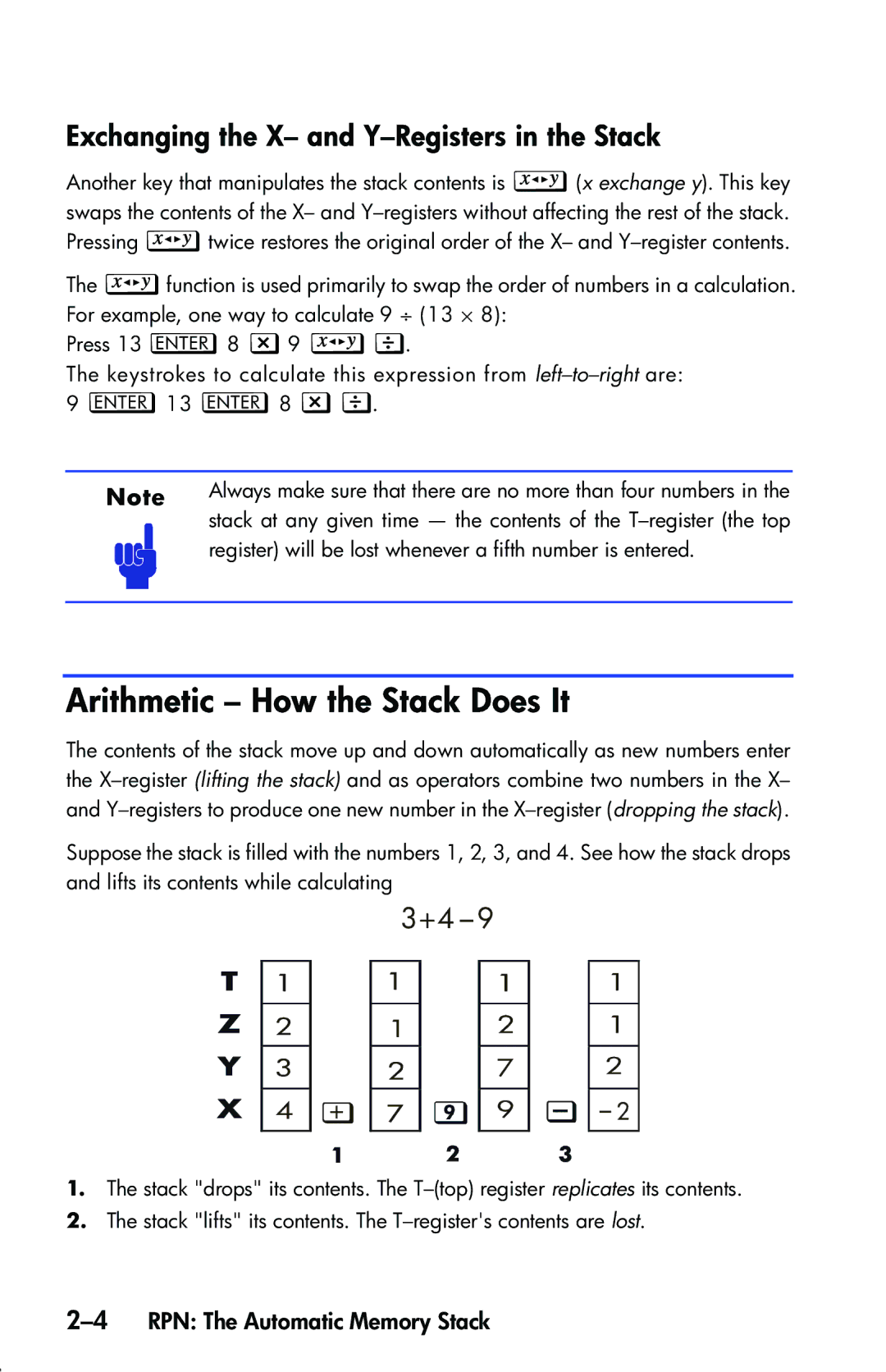
Exchanging the X– and Y–Registers in the Stack
Another key that manipulates the stack contents is [(x exchange y). This key swaps the contents of the X– and
The [function is used primarily to swap the order of numbers in a calculation. For example, one way to calculate 9 ⎟ (13 ⋅ 8):
Press 13 8 z9 [q.
The keystrokes to calculate this expression from
9 13 8 zq.
Note | Always make sure that there are no more than four numbers in the |
| stack at any given time — the contents of the |
| register) will be lost whenever a fifth number is entered. |
|
|
Arithmetic – How the Stack Does It
The contents of the stack move up and down automatically as new numbers enter the
Suppose the stack is filled with the numbers 1, 2, 3, and 4. See how the stack drops and lifts its contents while calculating
1.The stack "drops" its contents. The
2.The stack "lifts" its contents. The
